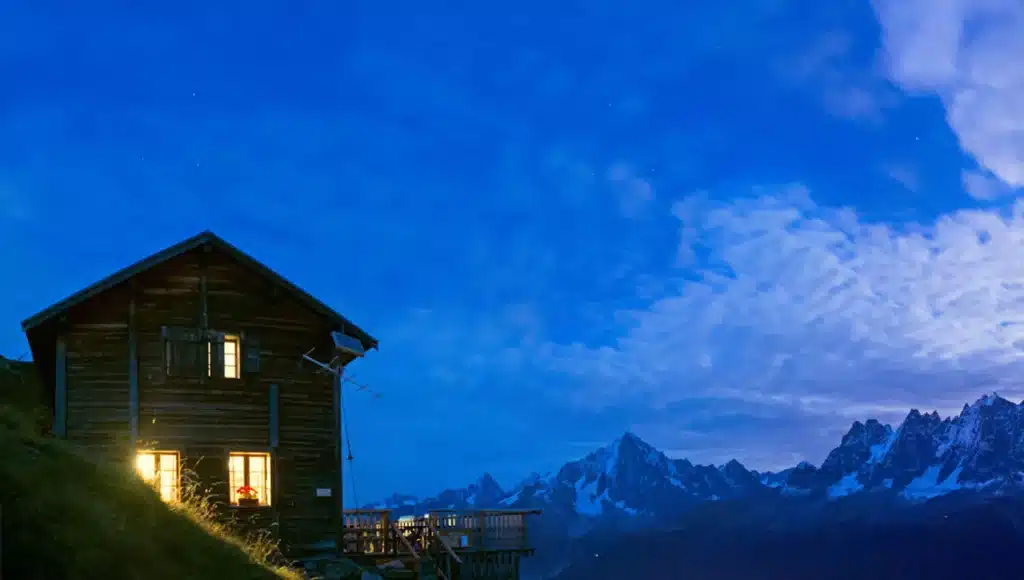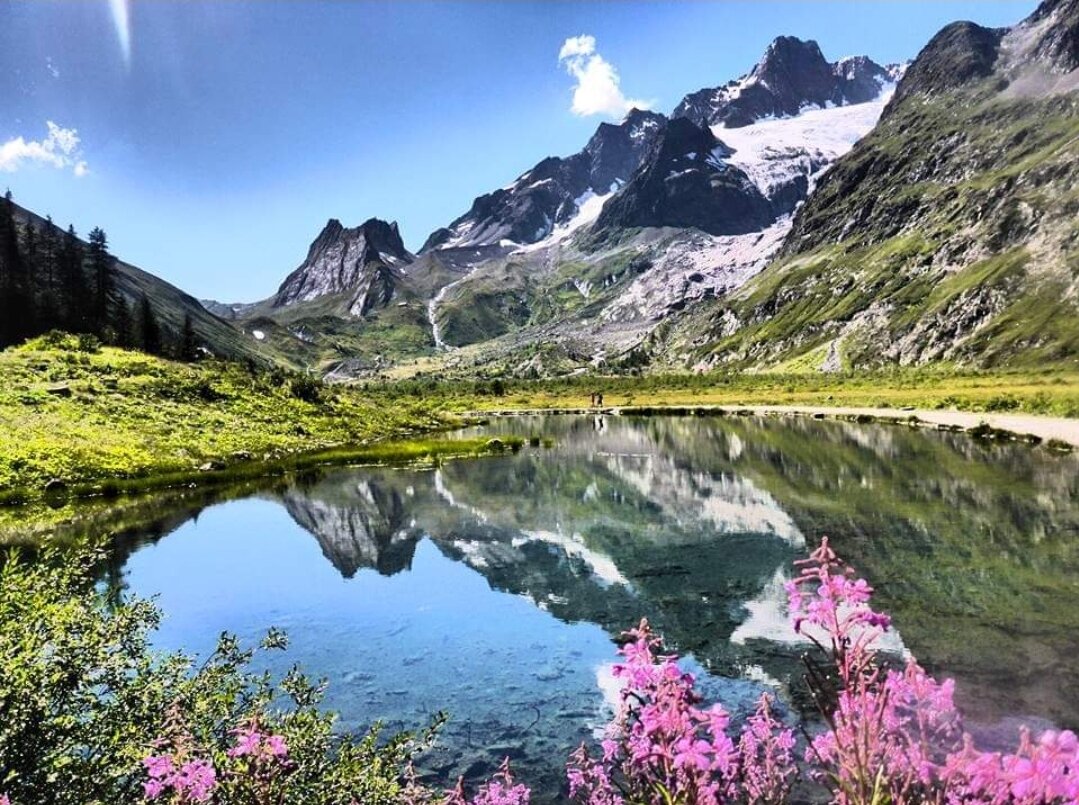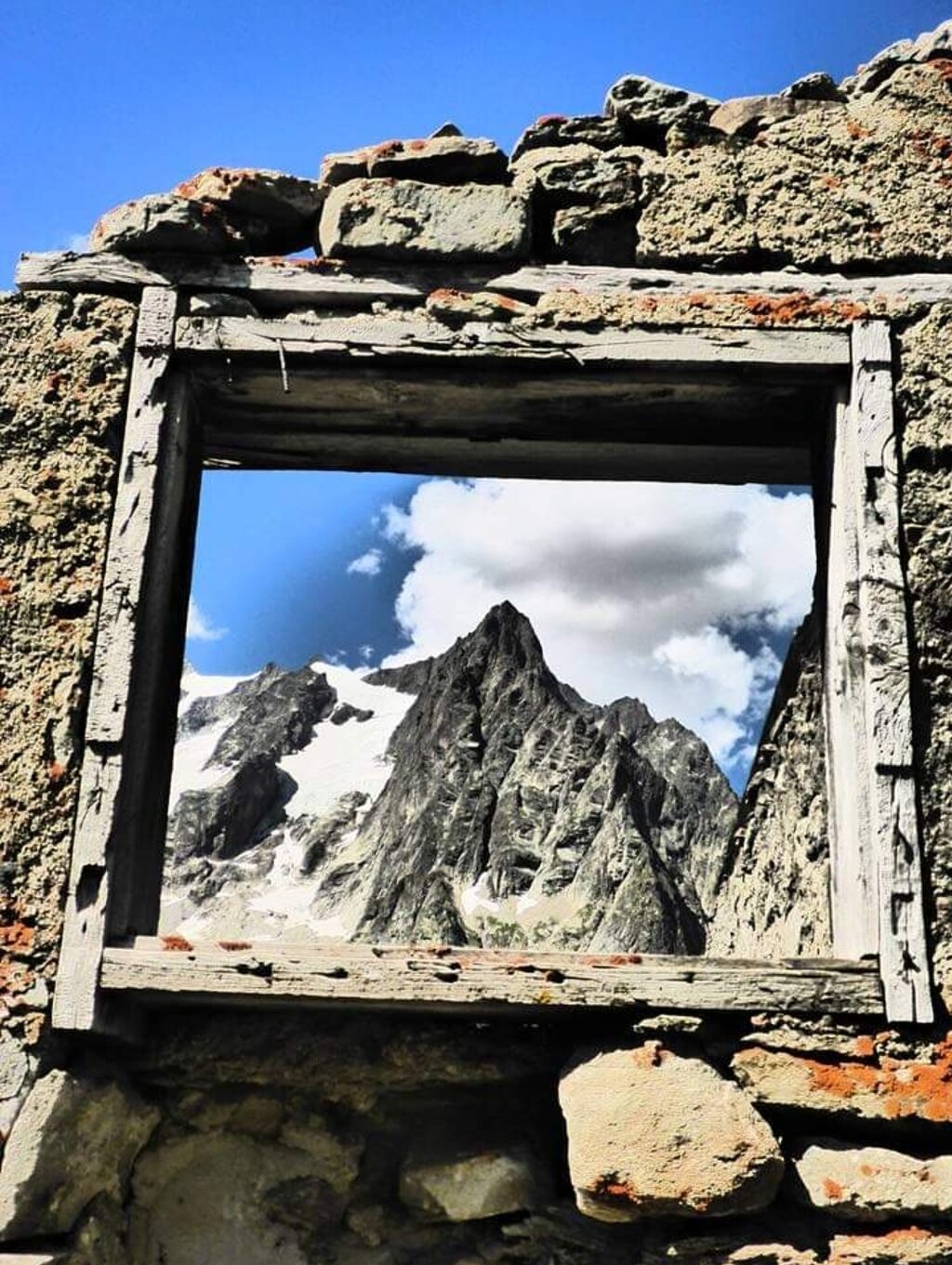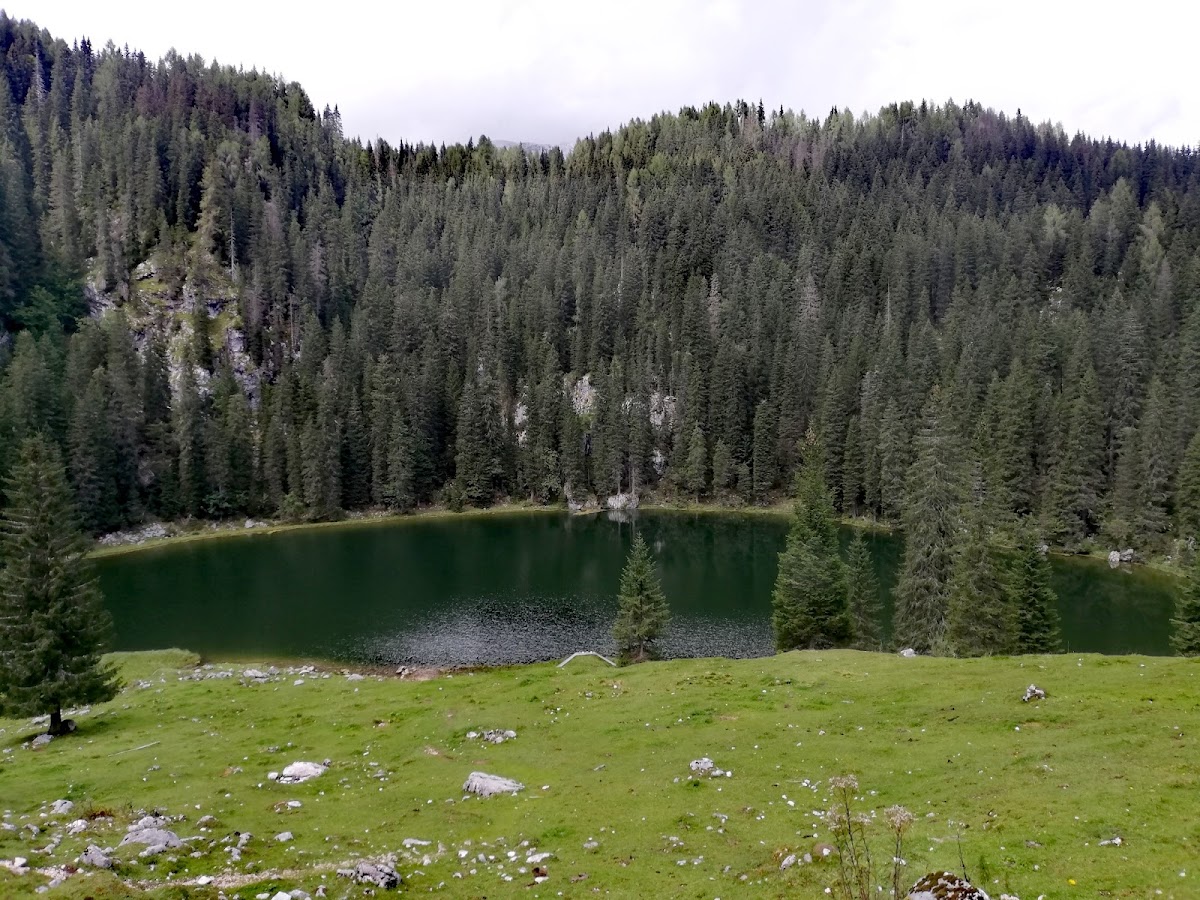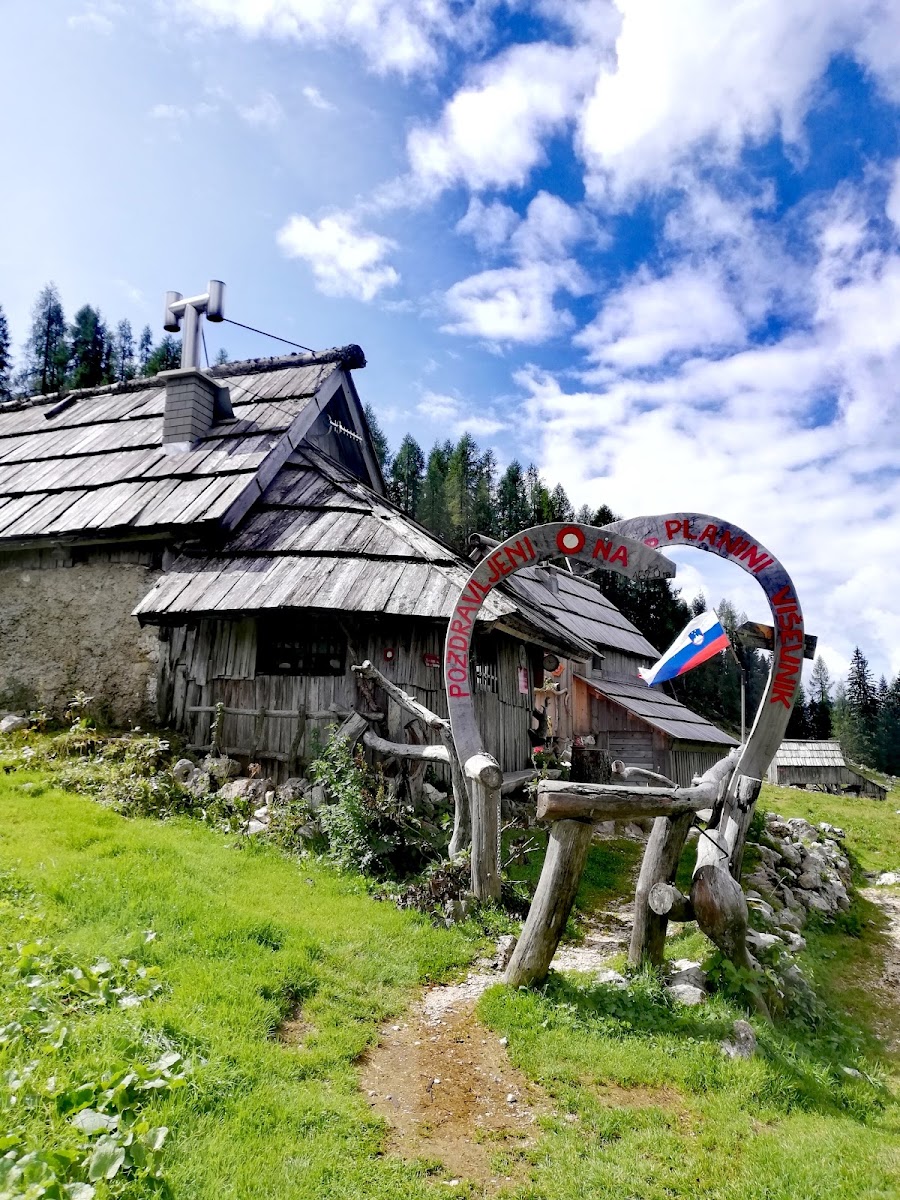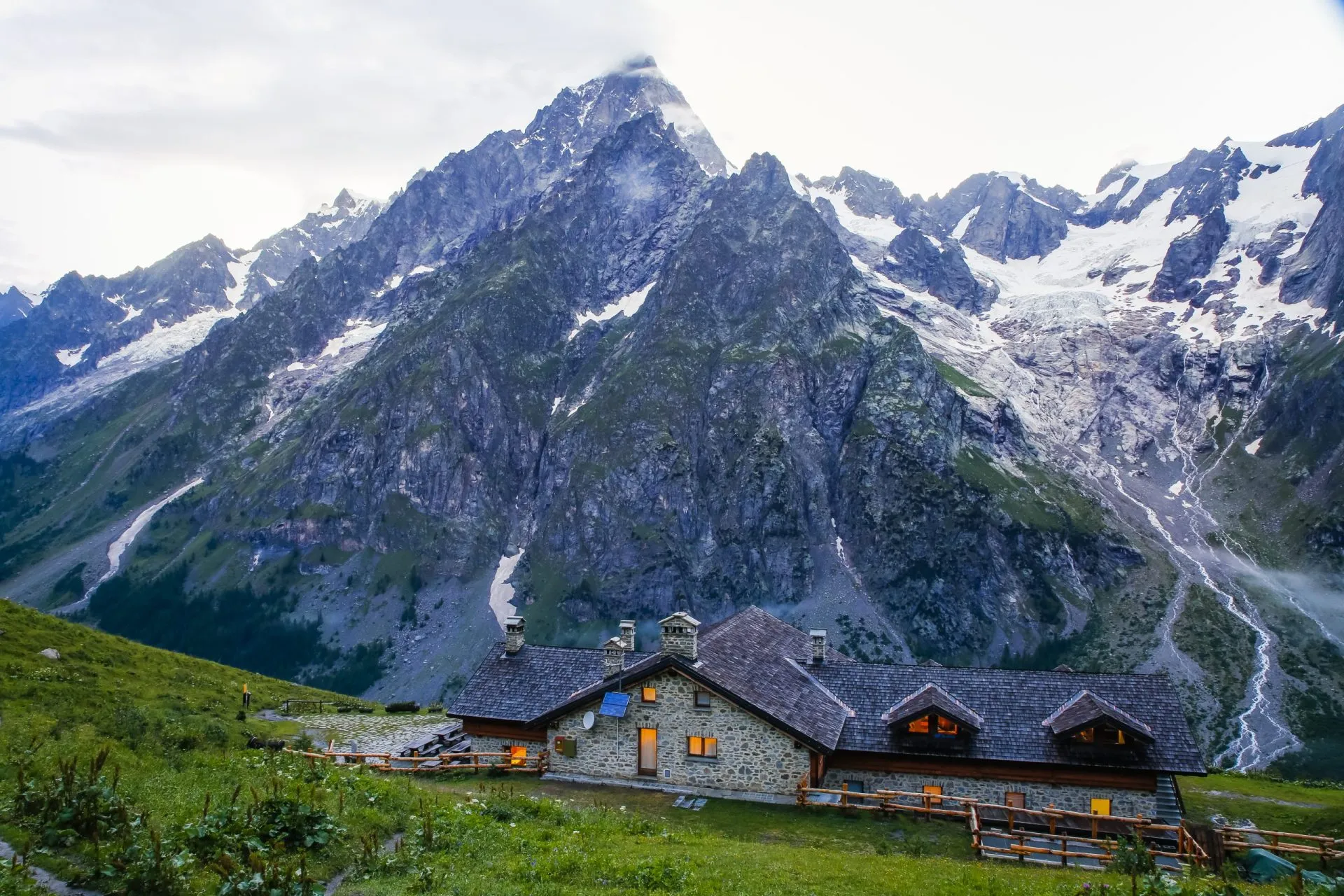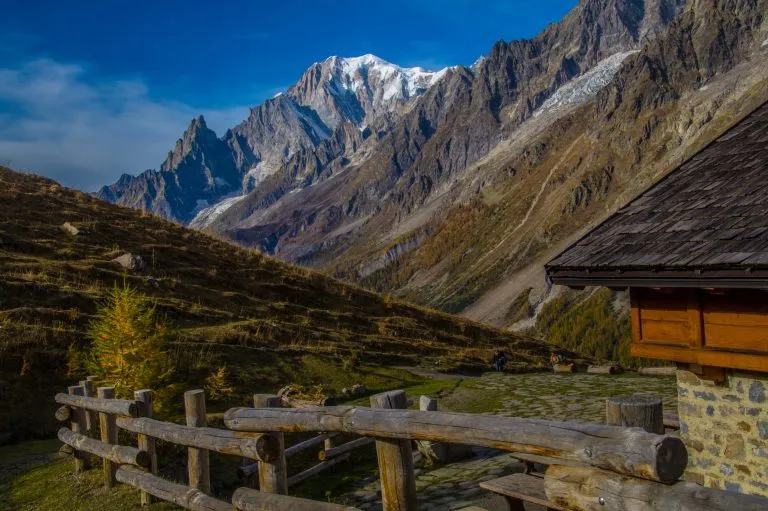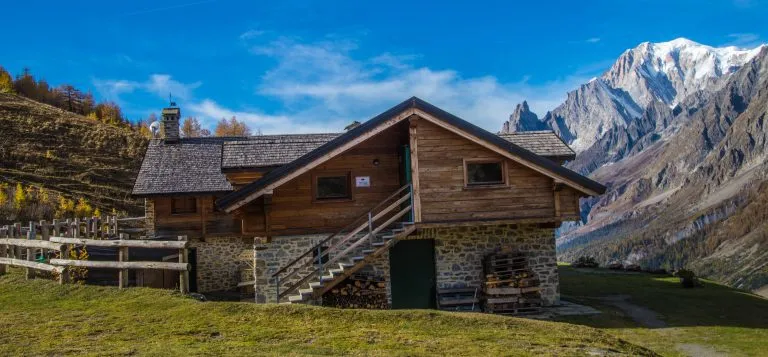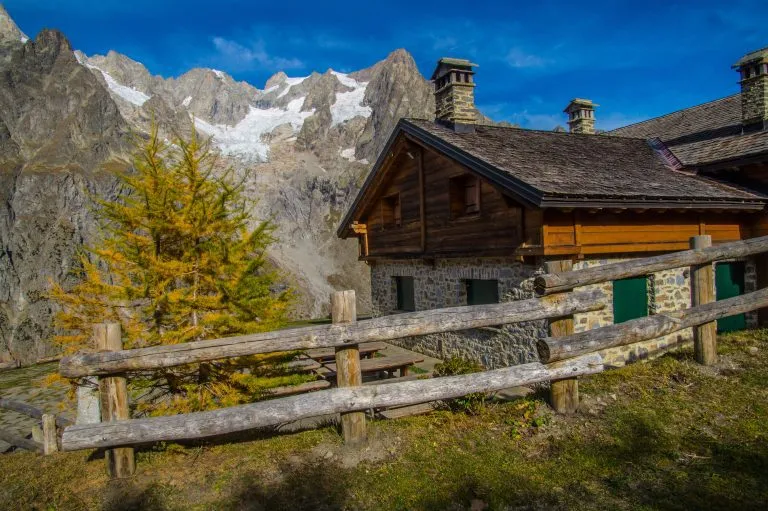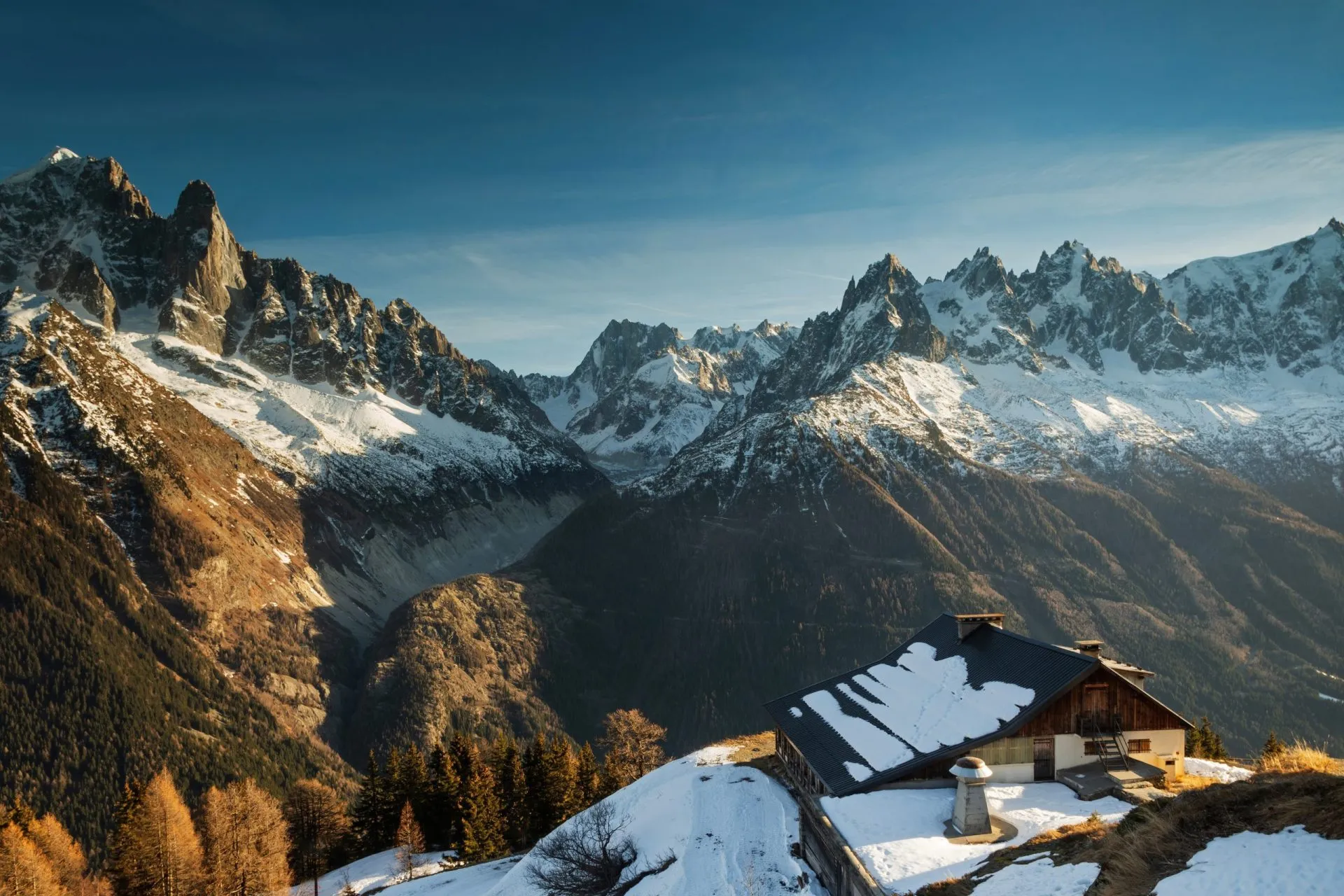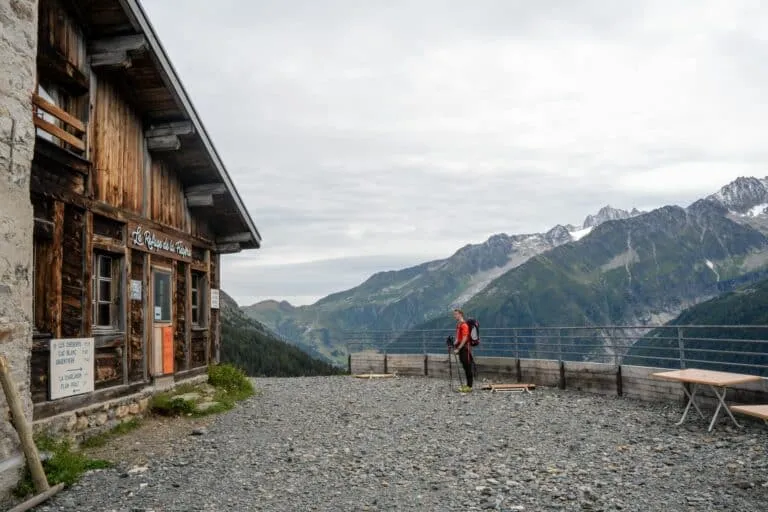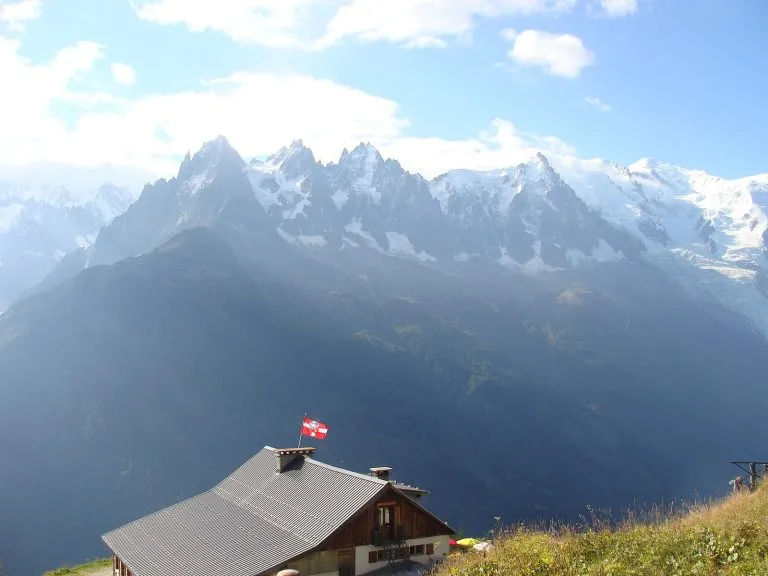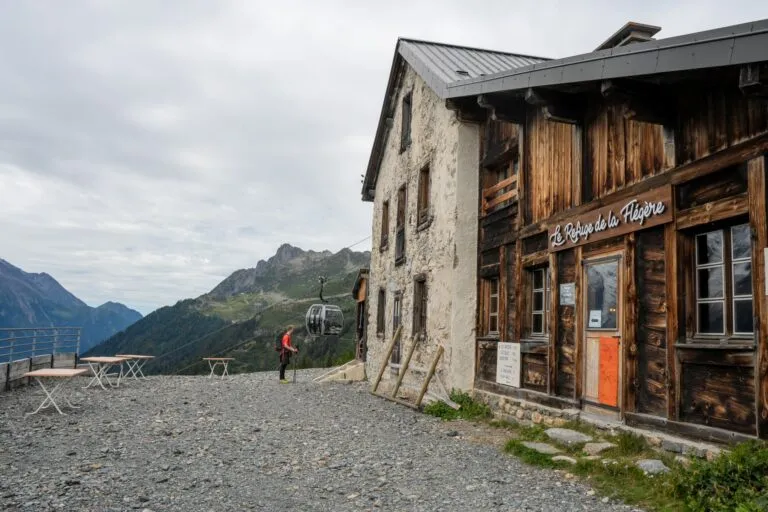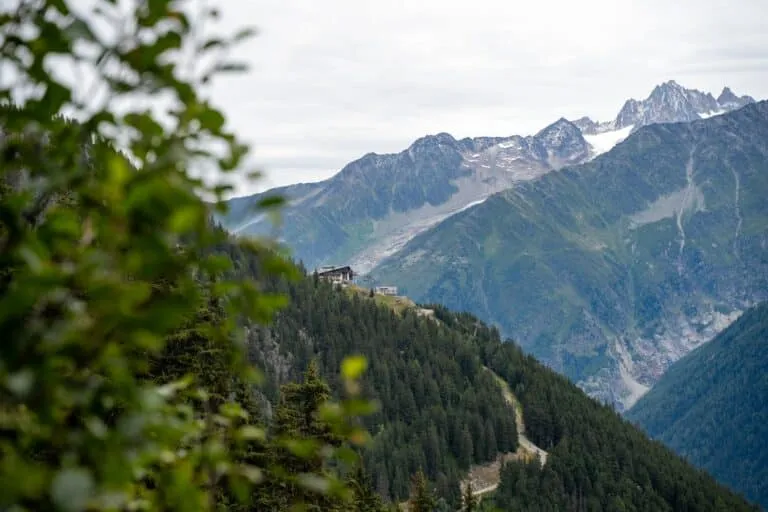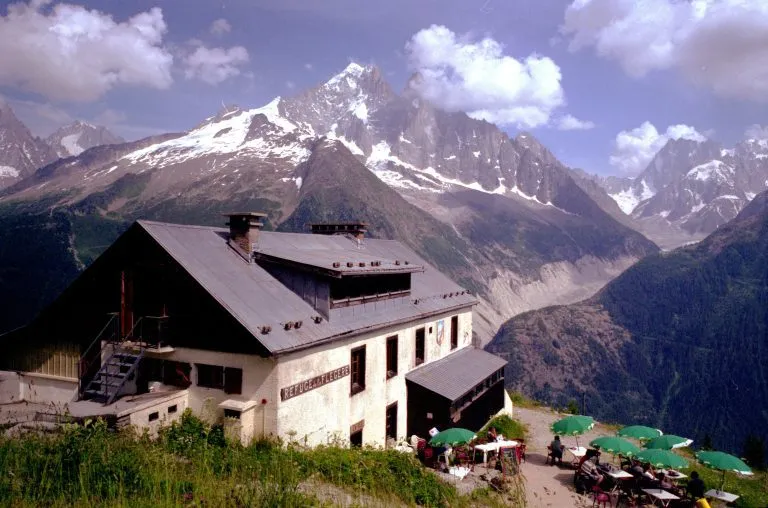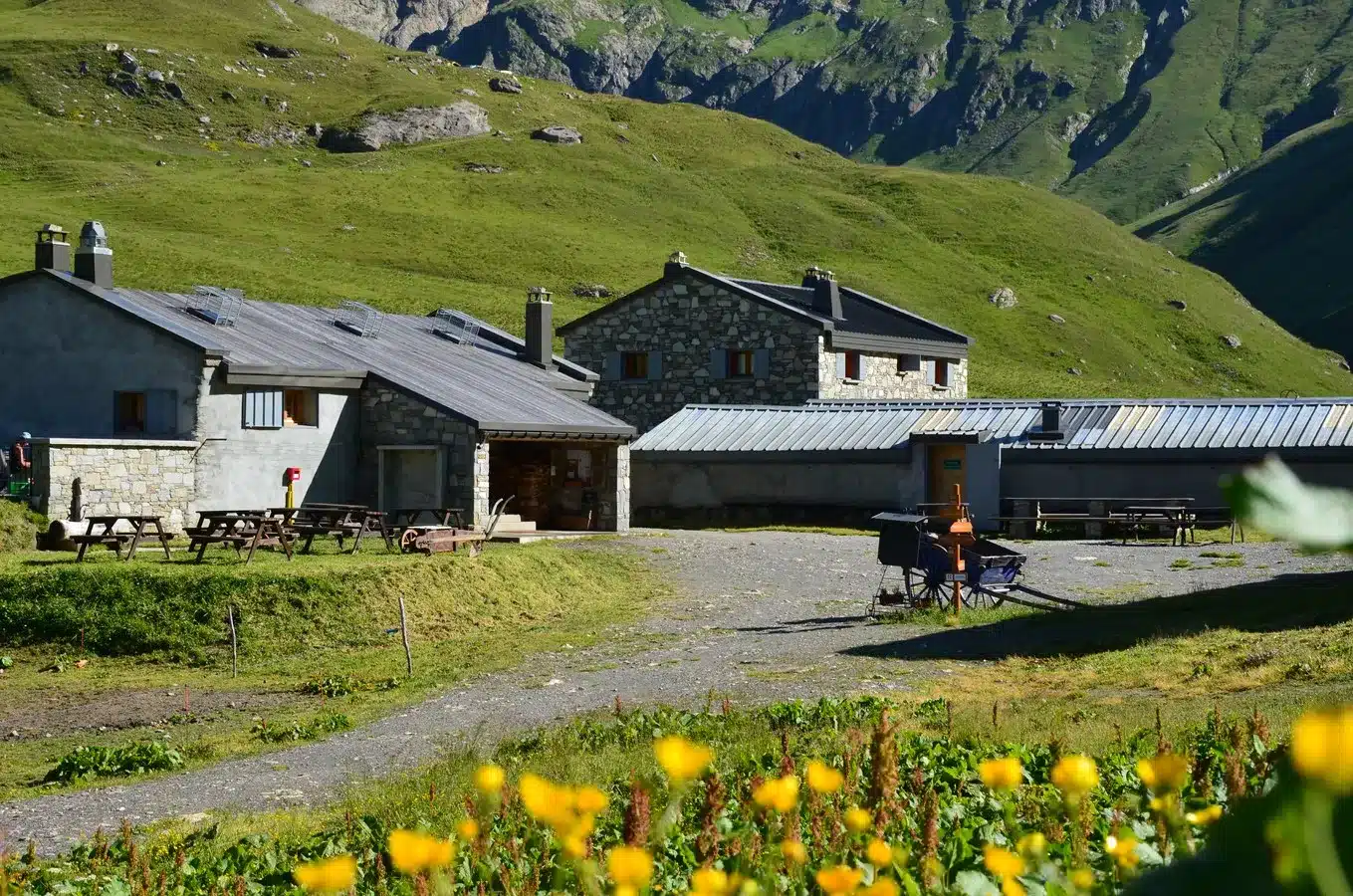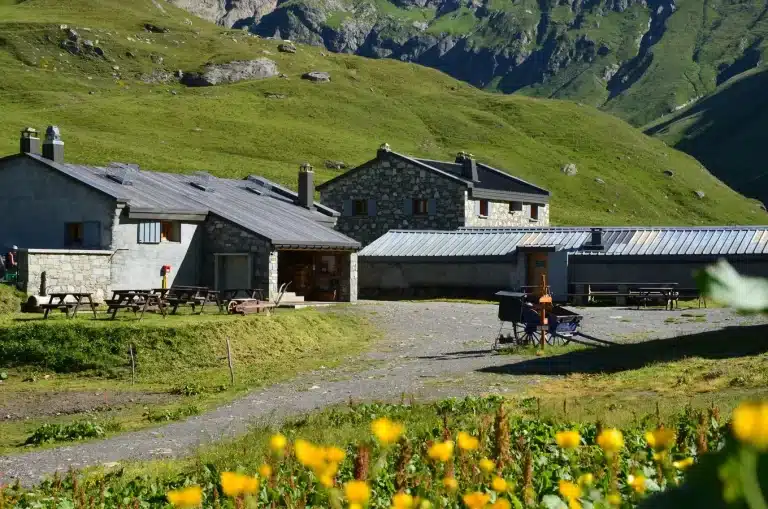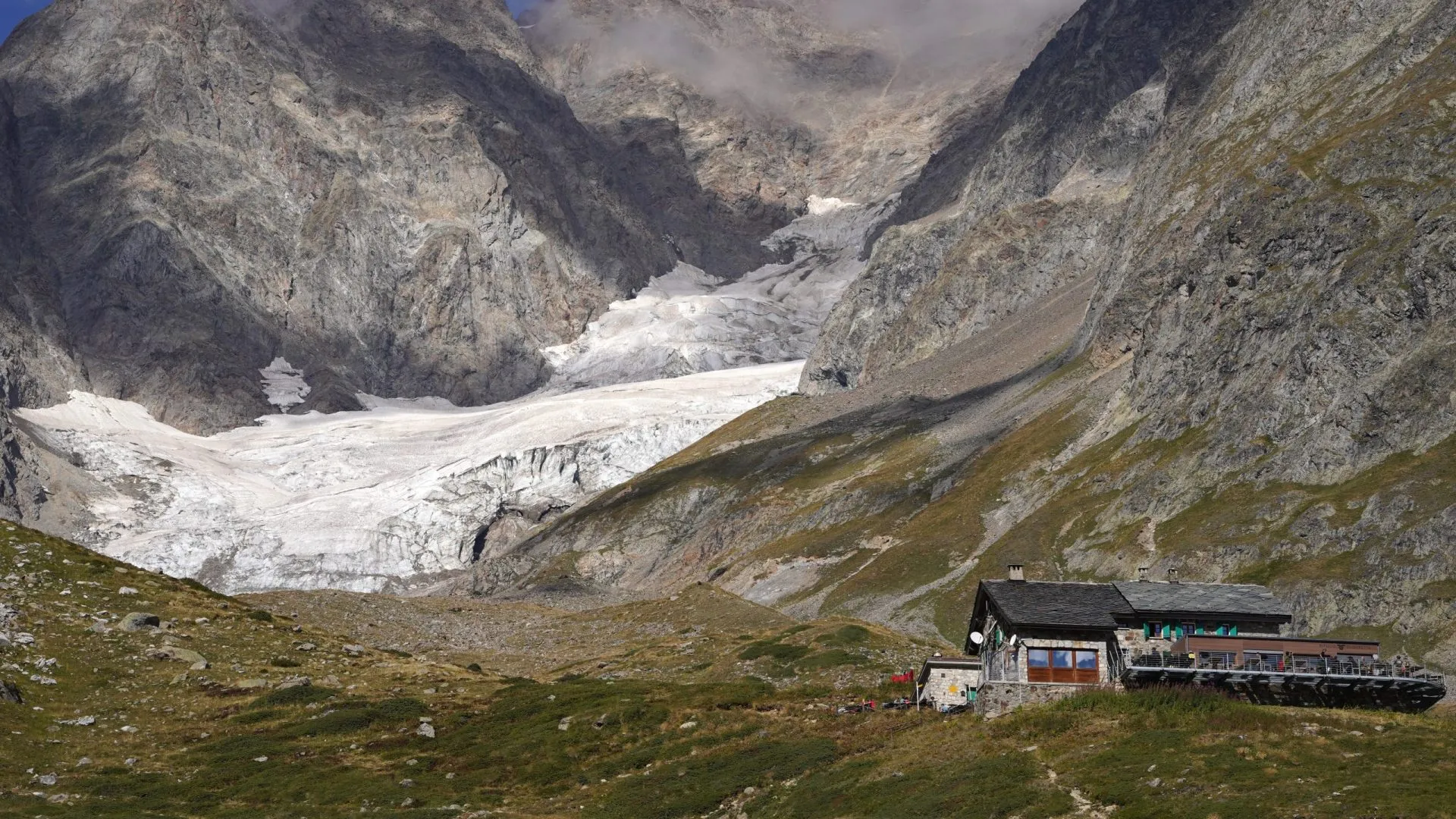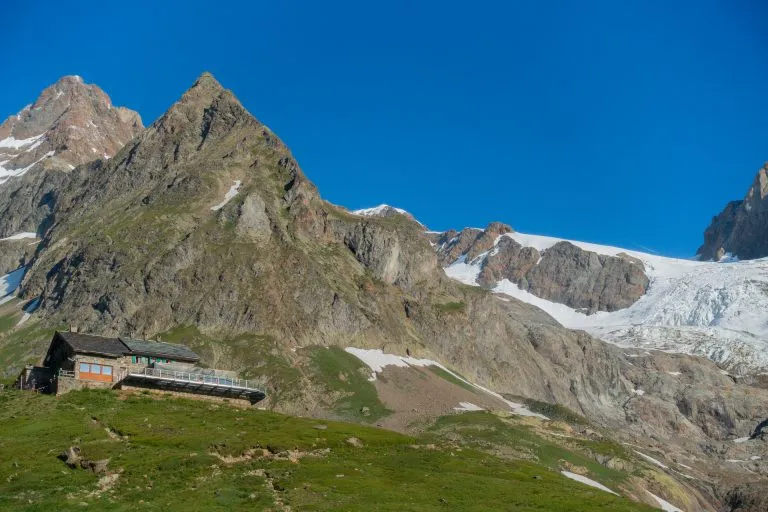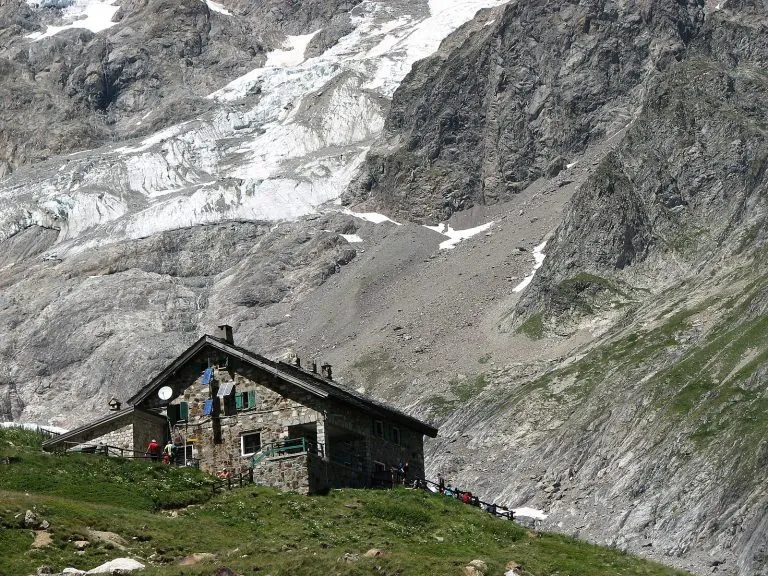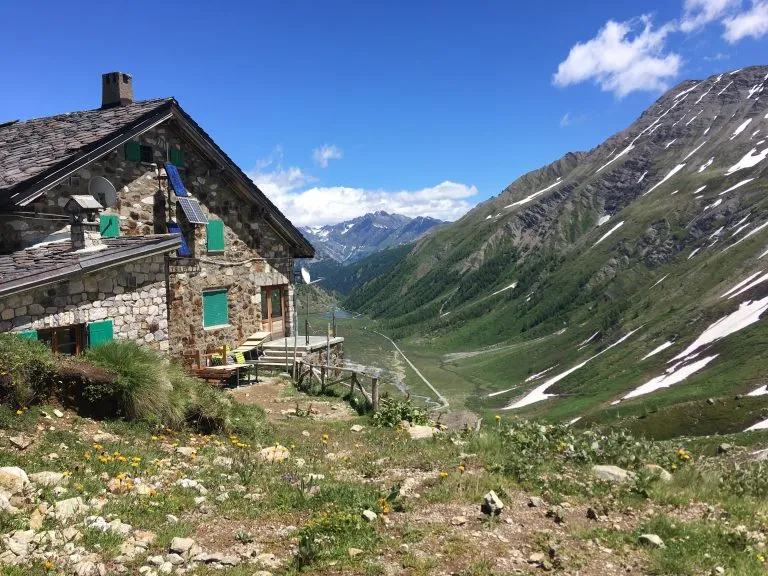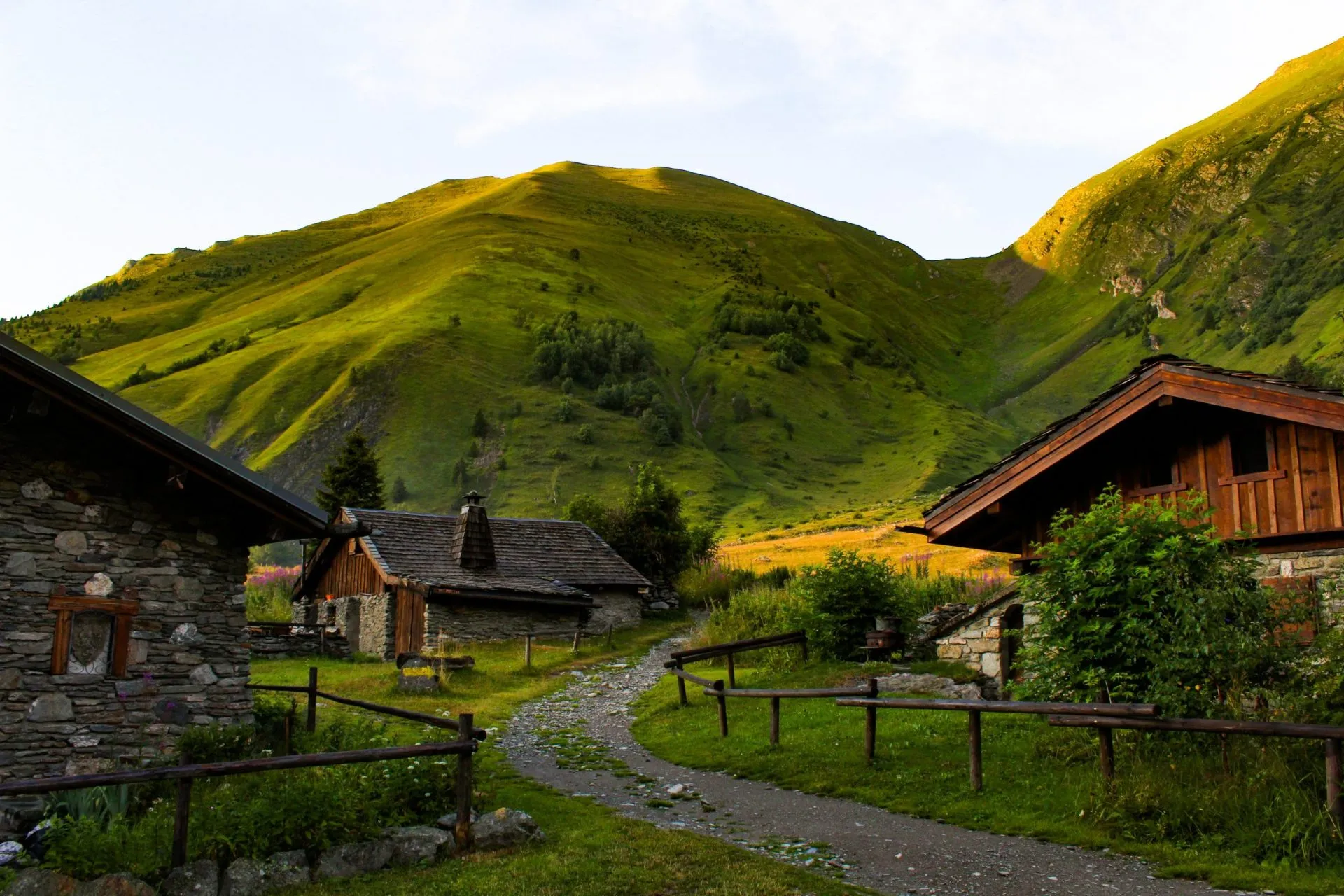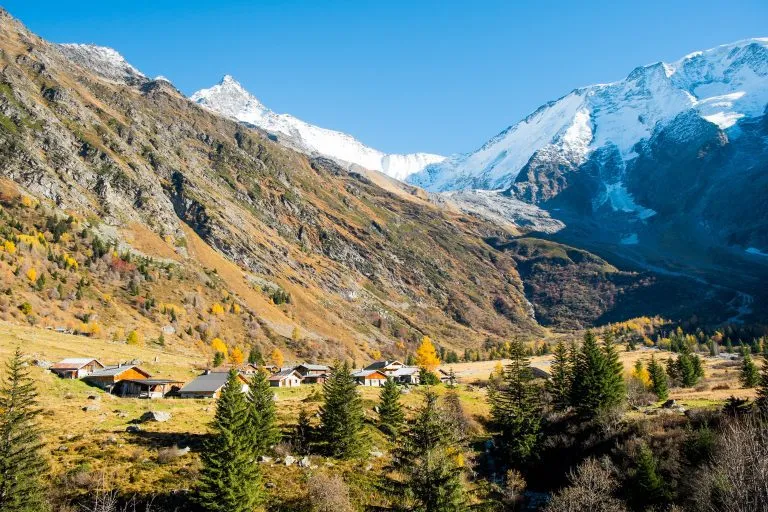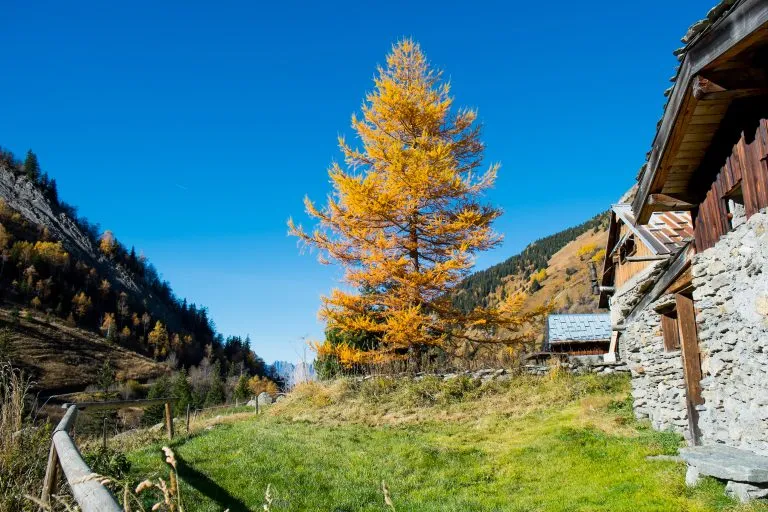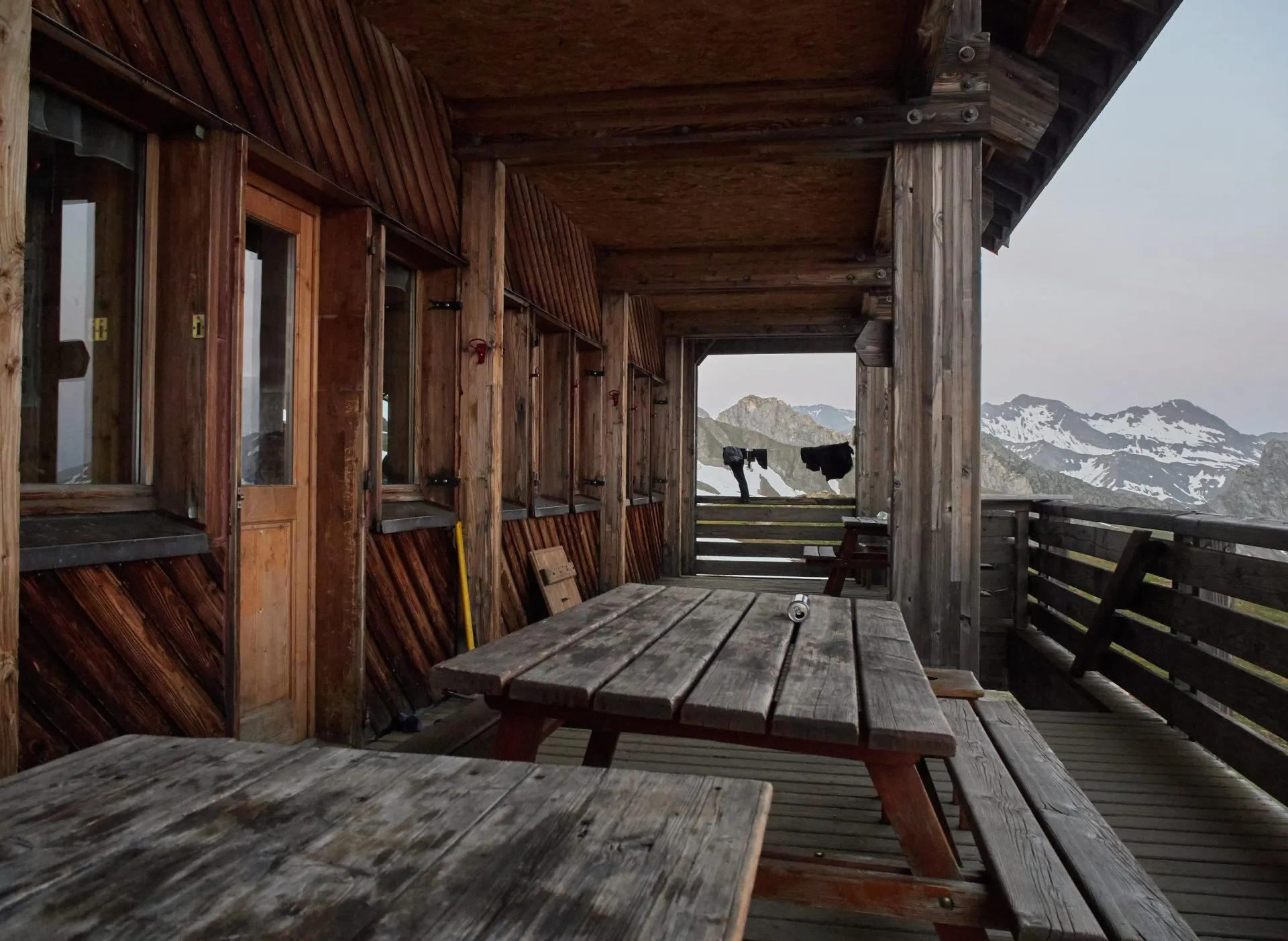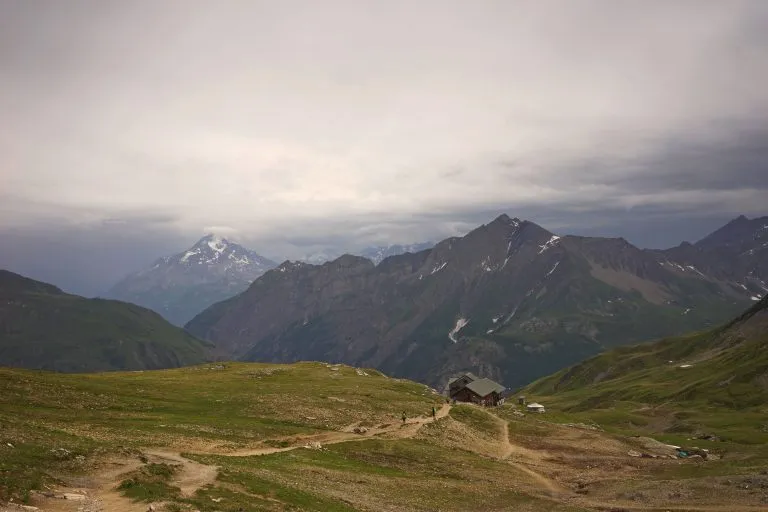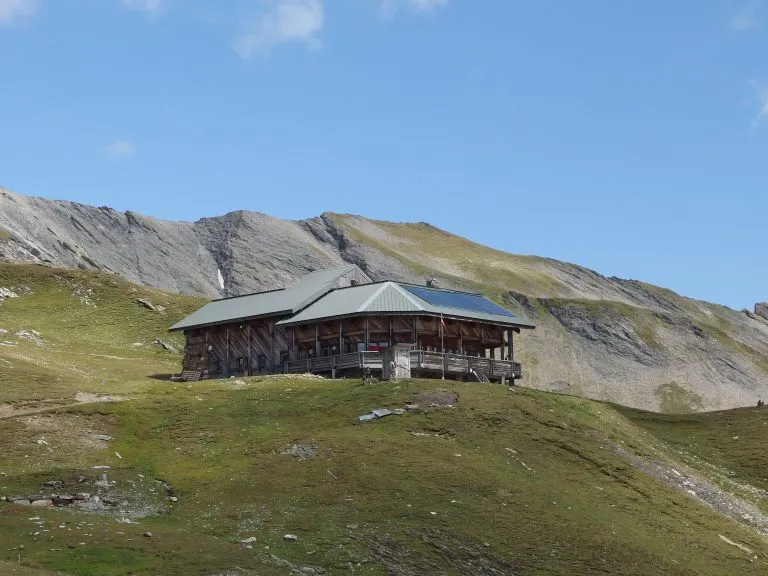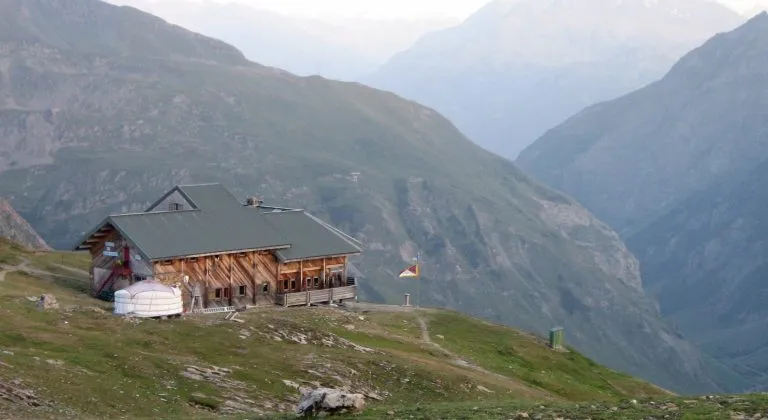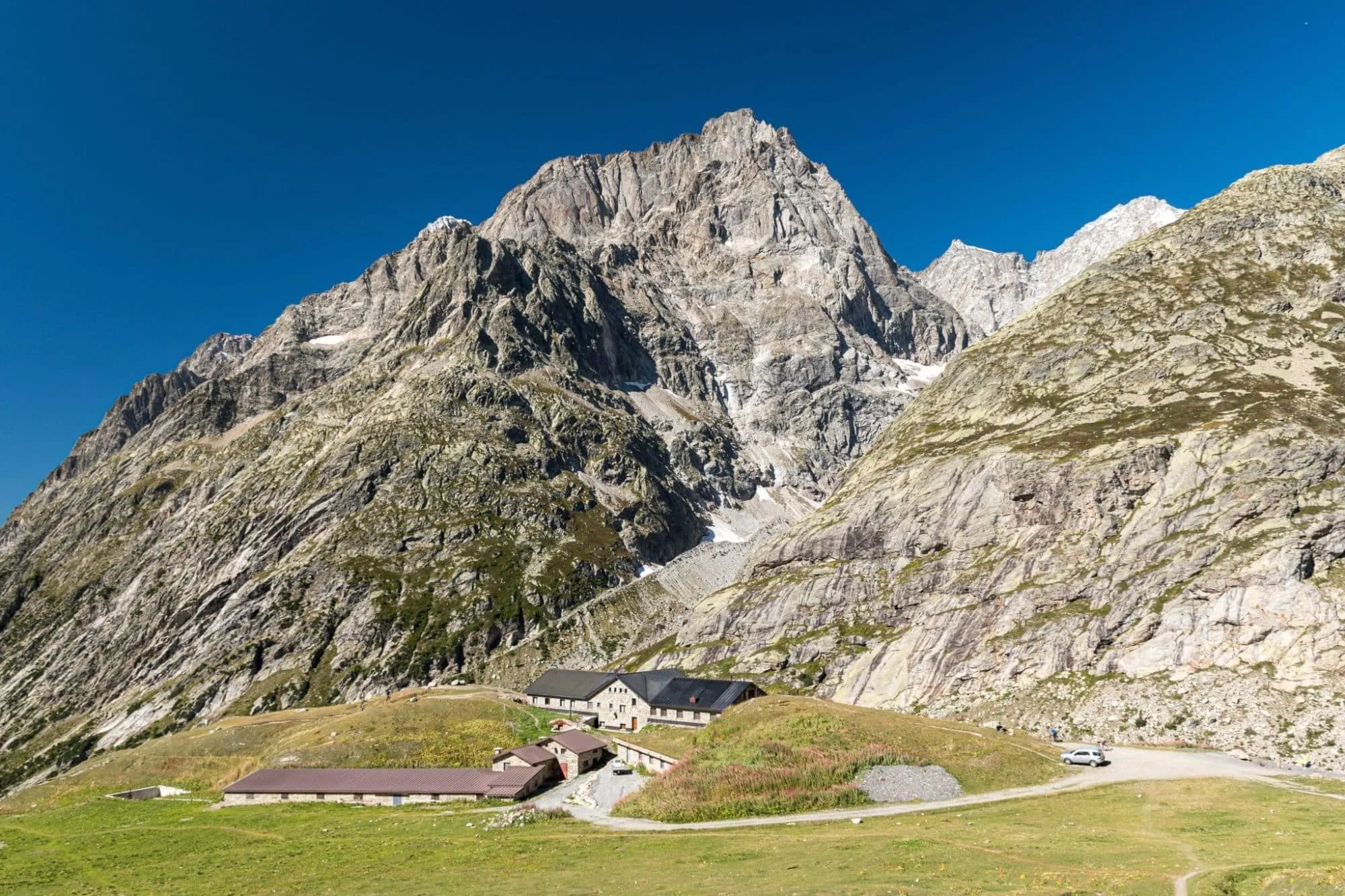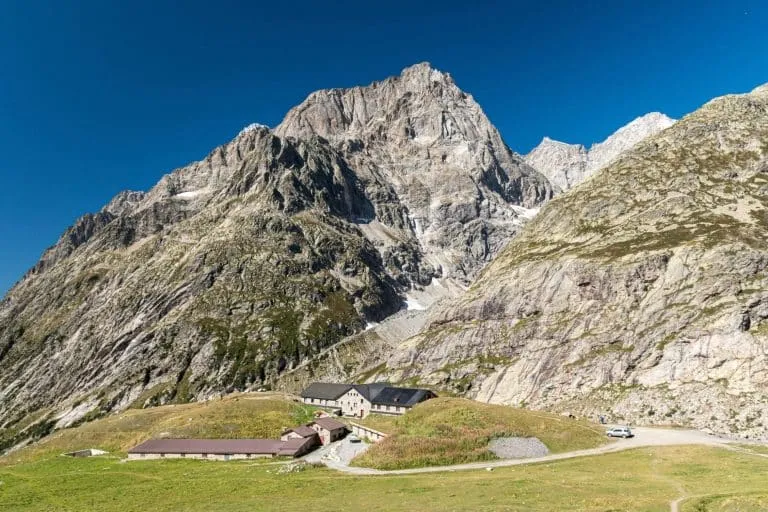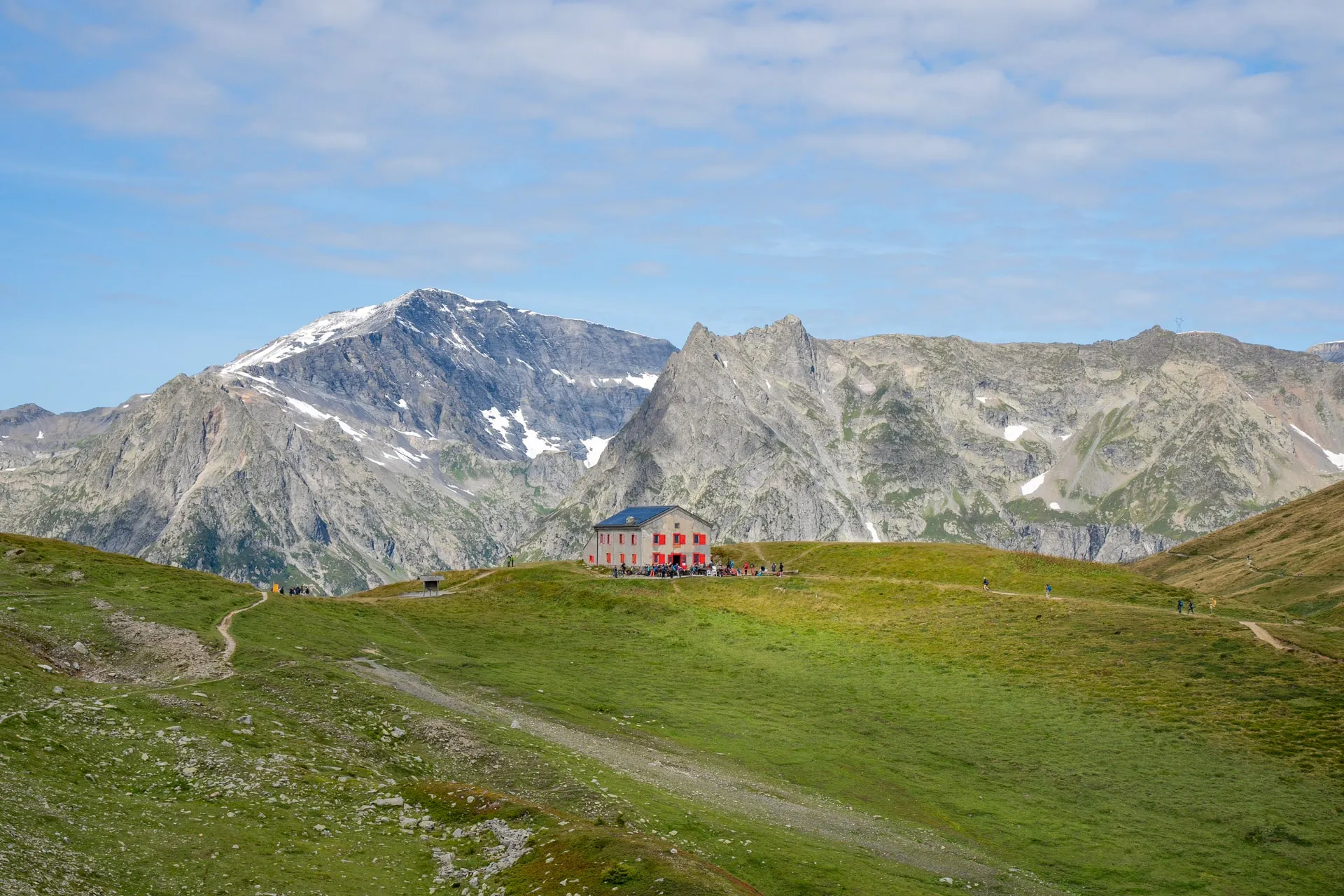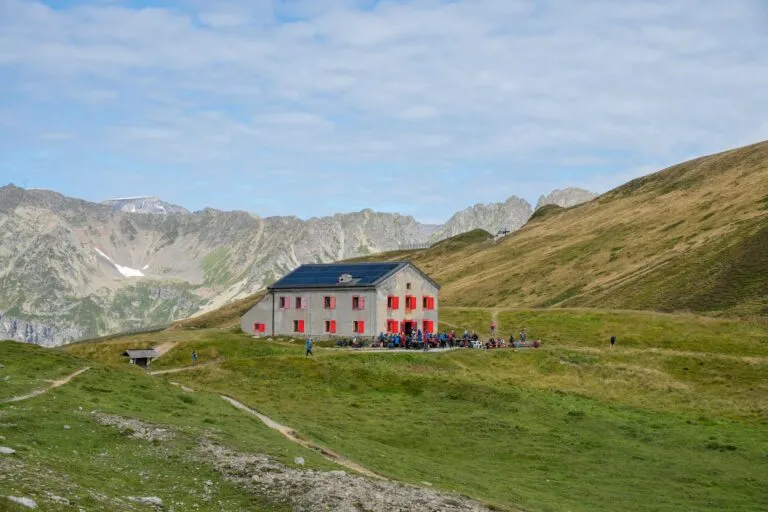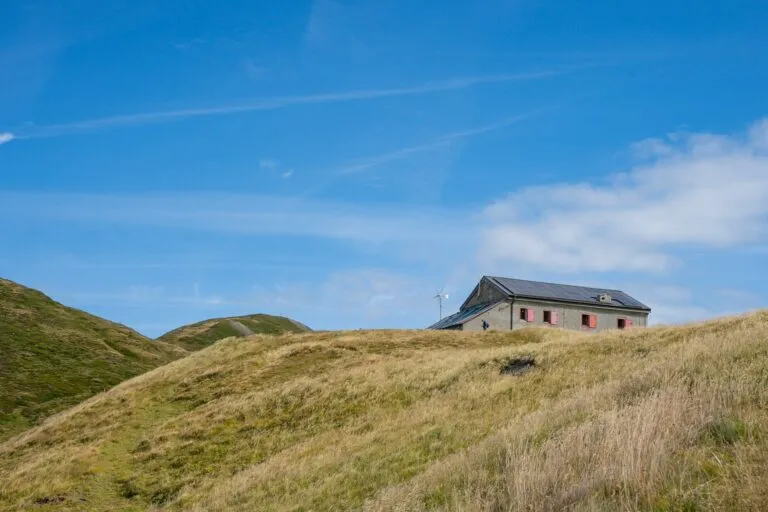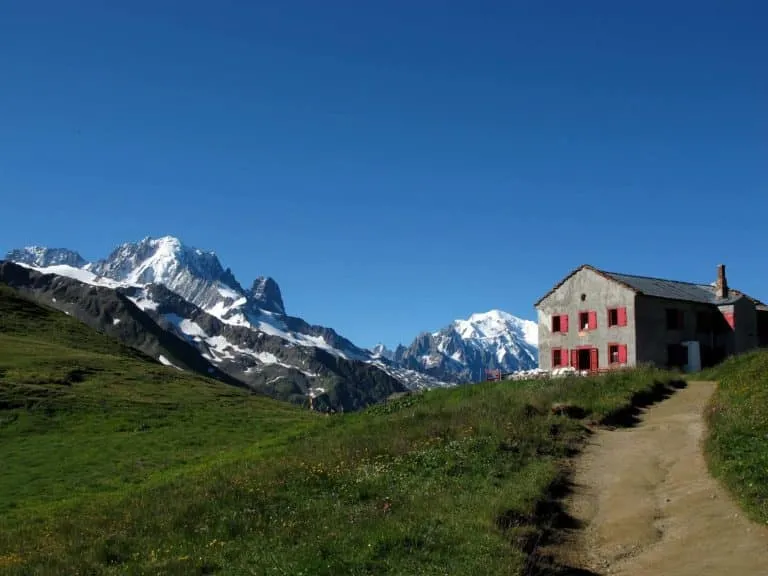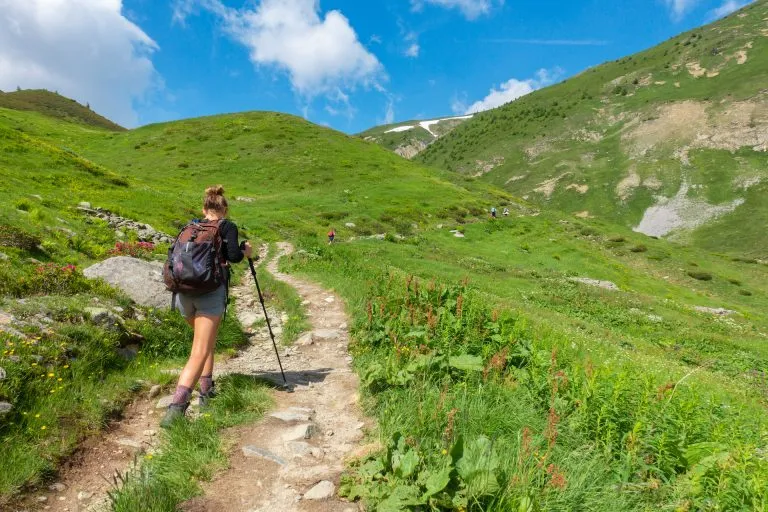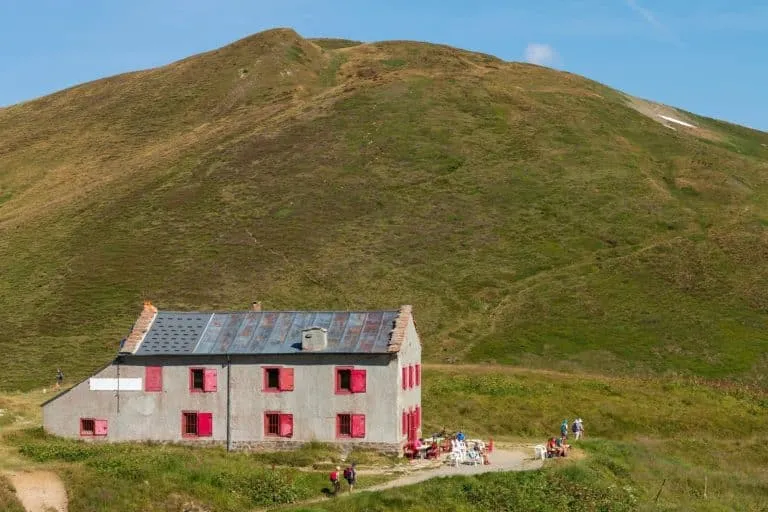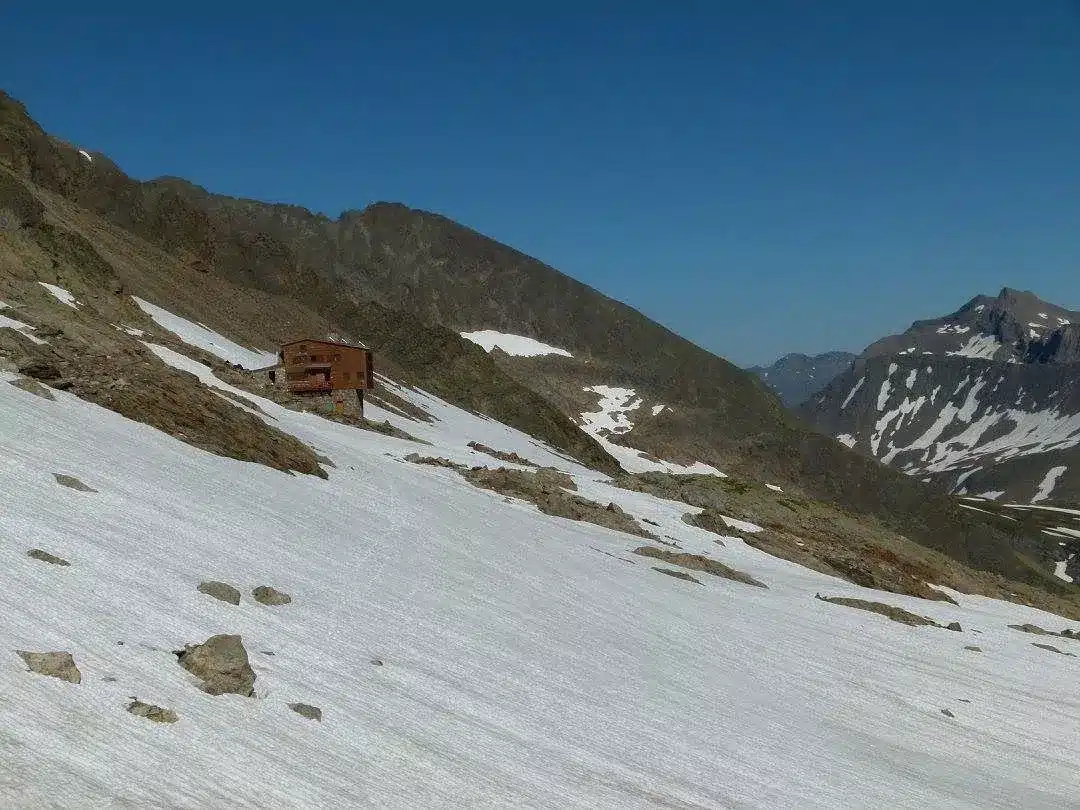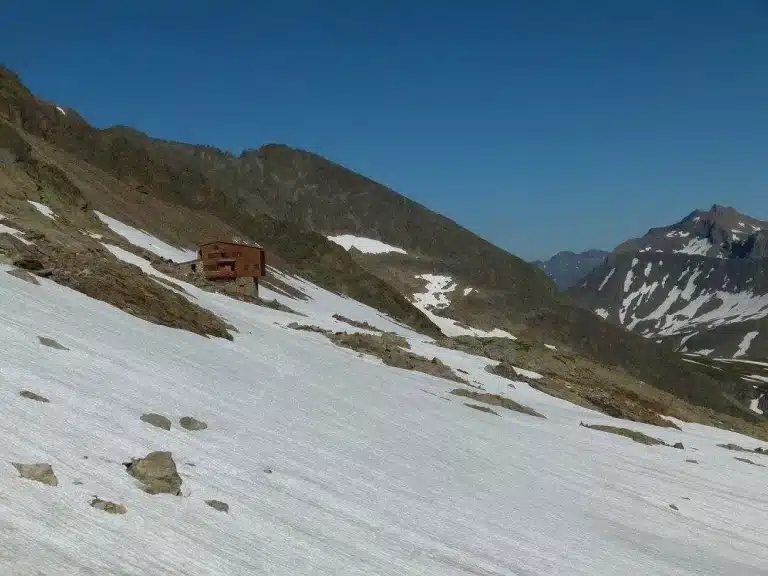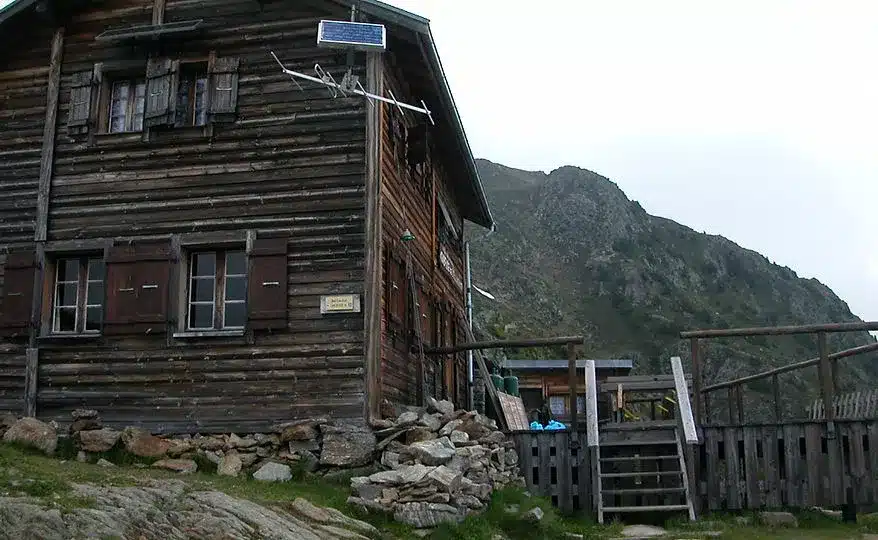
Refuge Bellachat
Description
Nestled near the Brévent pass, the Bellachat Refuge is a quaint wooden sanctuary that can accommodate 24 hikers. This small refuge, perched on the foundations of an old mountain pasture chalet, is steeped in history and offers a truly authentic mountain atmosphere. With its exceptional panorama of the Mont Blanc massif, it’s a place where the grandeur of the Alps feels within reach.
Just a couple of hours from the top of Brèvent, Refuge Bellachat is a gem often missed by those hurrying to complete their journey. Its modest size adds to its charm, and while current health measures have limited its capacity to just 10 beds, the experience remains undiminished. Booking ahead is essential.
For those descending from La Flégère, the refuge is a welcome respite, a spot to enjoy a well-earned break on the terrace with direct views of Mont Blanc. And if you’re coming from Refuge Lac Blanc, it’s a seven-hour trek to Bellachat, making it an ideal final stopover for those seeking a peaceful night’s rest away from the bustle of Chamonix.
Things to know
The weather in the mountains is very changeable. Even if it is +25°C in the valley, it much colder on the mountain passes, especially if cloudy and windy. That’s why you should take clothing in layers, along with with a windproof and waterproof jacket (could be two), and waterproof trousers (in case of rain). You should also have a separate set of clothes for chilling in the refuges.
Check out our full packing list here.
Even though the views on the Tour du Mont Blanc are scenic and wild, the trail itself never goes more than a day of hiking away from the nearest road or civilization. In case you decide to stop hiking, you can always get to the nearest village or town, and use public transportation to get to your desired destination. If that happens during the hike, we are also here to help you plan this.
Should there be an emergency situation on the trail, you will always have access to the local rescue services on the number 112. We provide more information on that in our self-guided handouts.
Although it’s not the only one hikers decide to take, it is the best. The main advantage of that is that you’ll always have the view of the Mont Blanc massif in front, and not behind your back. There will also be fewer steep downhills (saving your knees) than otherwise.
Yes, but it is not recommended if they are too young (younger than 10). Either way, they need to have some previous experience with mountain hiking and know what it takes to complete a full day on the trail.
You should do it as early as possible because the spots at the accommodations along the trail usually run out fast. That means the longer you wait, the fewer options there are.
Yes, public transportation is available in most of the valleys, which can shorten some flat sections of the hike. Additionally, there are some cable cars that can take you up the mountains, reducing the amount of ascending you do on some stages.
Yes, but only through the valley. That means that it will be waiting for you at your next accommodation on the valley floor, be it a hotel or a chalet. If you are staying a night in between in a mountain hut, you have to take enough with you in the backpack to make it an extra day.
Some parts of the trail are exposed to thunder, so hiking them in that kind of weather is heavily unadvised. Still, you can make up for that lost time by taking public transportation when possible.
Most of them do not, which is why you should always have enough cash to pay for anything extra than what is included in our tours. Only one hut needs to be paid on the spot, of which we inform you in advance. Do not worry about the hotels and other private accommodations though — they mostly accept them. Still, it is recommended you always have some extra cash with you in case something goes wrong.
You’re going to be traveling through three countries — Italy and France use Euros (EUR) while Switzerland has Swiss Francs (CHF).
Some of them offer showers, but there might not be any hot water. In most, you need to buy a token to get a minute of hot water (if it didn’t run out already).
No. All of the huts have blankets, bedding, and pillows, but it’s nice to bring your own silk or cotton sleeping liner.
We can arrange it in the hotels and other accommodations in villages and towns along the way. As for the mountain huts, a rare few have that option, but it is usually the first one that is sold out, so you need to be really early if you want us to get it.
There isn’t in most of them. Enjoy the opportunity of disconnecting from technology and reconnecting with nature. But if you really need it, you can try to get some signal outside or wait until coming back to the valley. There, you should have no problem getting to the internet.
Vegetarian meals are readily available in most accommodations. On the other hand, vegan options are harder to be found, especially in the huts. But if you tell us enough in advance, we’ll contact the huts for you and try to accommodate you to the best of our abilities.
Each transfer allows only one bag per person, which must be soft. The maximum weight permitted is 15 kg. Additionally, bags must not contain food, beverages, medicines, valuables, money, or official documents.
The ladders are safe and sturdy but exposed to height and require caution and sure-footedness, especially for hikers with significant vertigo. While the sections shouldn’t pose too large of a challenge to experienced hikers, they are strongly advised against in bad weather. For in-depth information, please follow the link to our extensive TMB guide.



